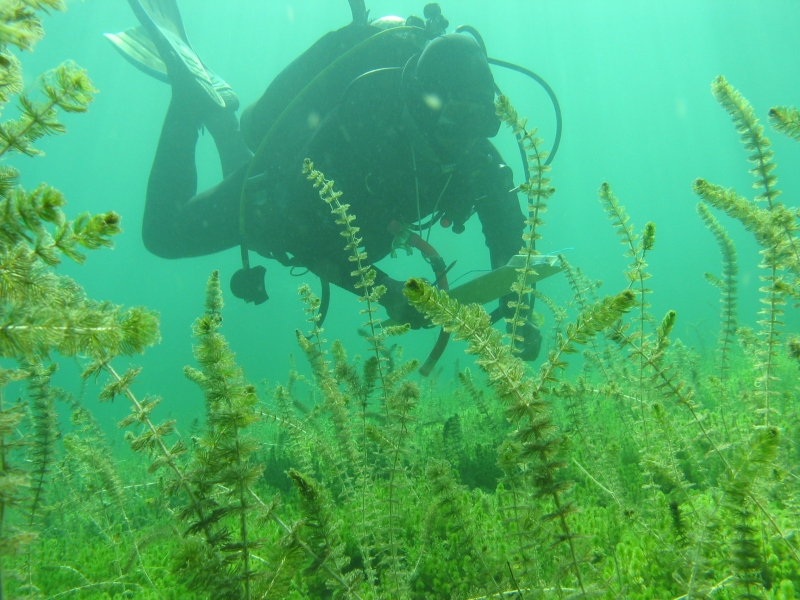Many New Zealand lakes are under threat due to changes in land-use and invasions of alien aquatic plants. NIWA's LakeSPI (Lake Submerged Plant Indicators) is a bio-assessment tool for monitoring and reporting on the ecological condition of lakes. The LakeSPI website has been updated with improved functionality.
LakeSPI is based on the principle that New Zealand lakes can be characterised by the composition of native and invasive plants growing in it, and the depths to which they grow. Submerged aquatic plants are good indicators of lake condition as they are easy to observe, reflect the environmental conditions in a lake over an extended period of time and focus on shoreline margins - where greatest public interaction occurs.
LakeSPI has now been used to assess more than 250 lakes and is being adopted by most agencies responsible for monitoring of lake condition in New Zealand. The uses of LakeSPI vary between regions, with results used for monitoring of lake trends, regional and national reporting, and prioritising management initiatives (e.g., protection, monitoring and weed surveillance).
LakeSPI information can be accessed in a free and user-friendly format at lakespi.niwa.co.nz. This website has recently been redeveloped with funding from the Terrestrial and Freshwater Biodiversity Information System (TFBIS) programme, and was re-launched on 1 December 2012.
The new LakeSPI web reporting interface aims to provide lake managers with an easily accessible way to find LakeSPI information and report on the ecological condition of New Zealand lakes. Enhanced search functionality enables users to search for lakes by size, depth, type and condition, or through the use of advanced geo-spatial mapping software. Users can then choose to view LakeSPI reports for a single lake or compare multiple lakes at a regional or national level. Guidelines for the appropriate use of LakeSPI for SOE reporting have been provided and links provide access to further LakeSPI information.
For more information see the Lake SPI page on our website

